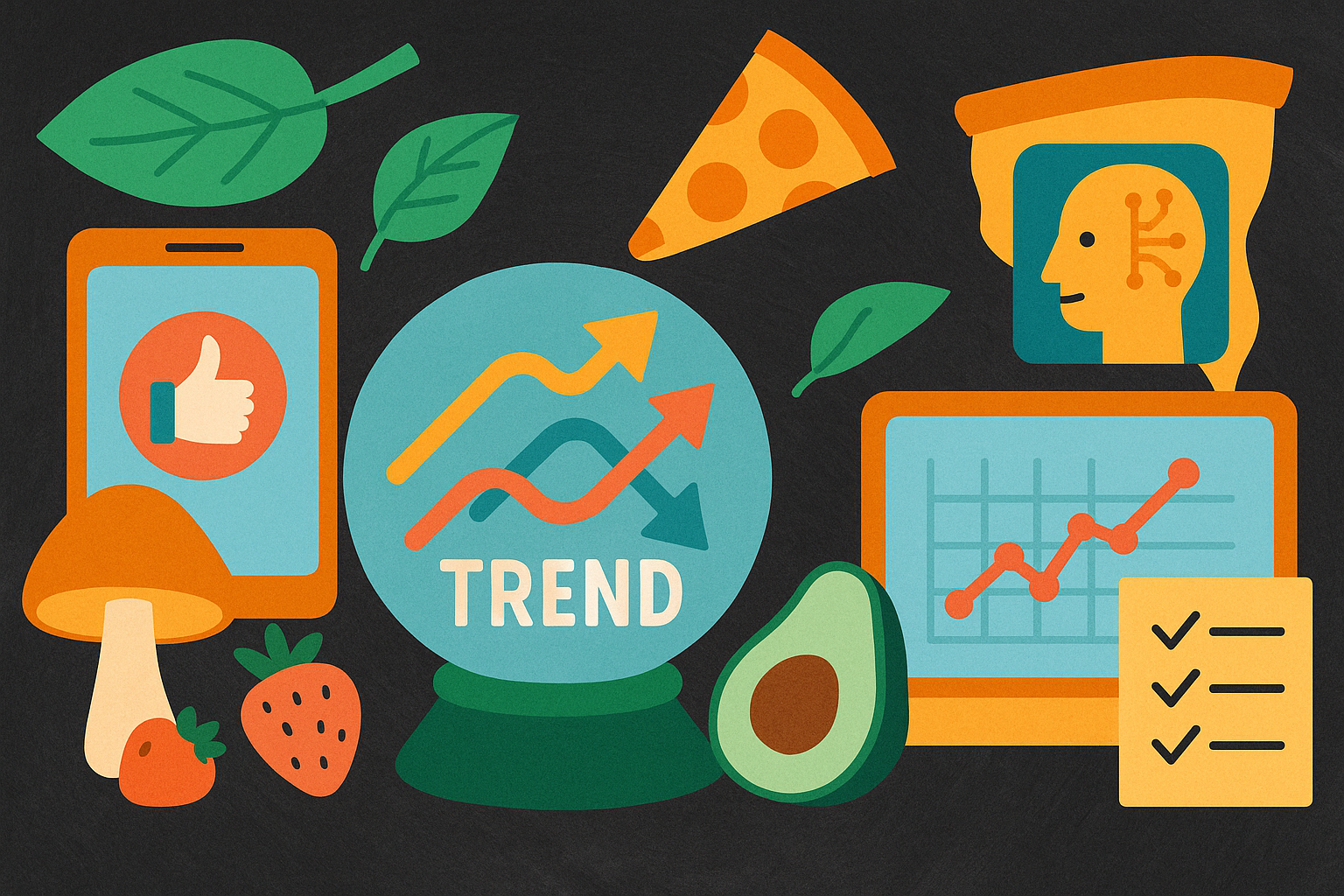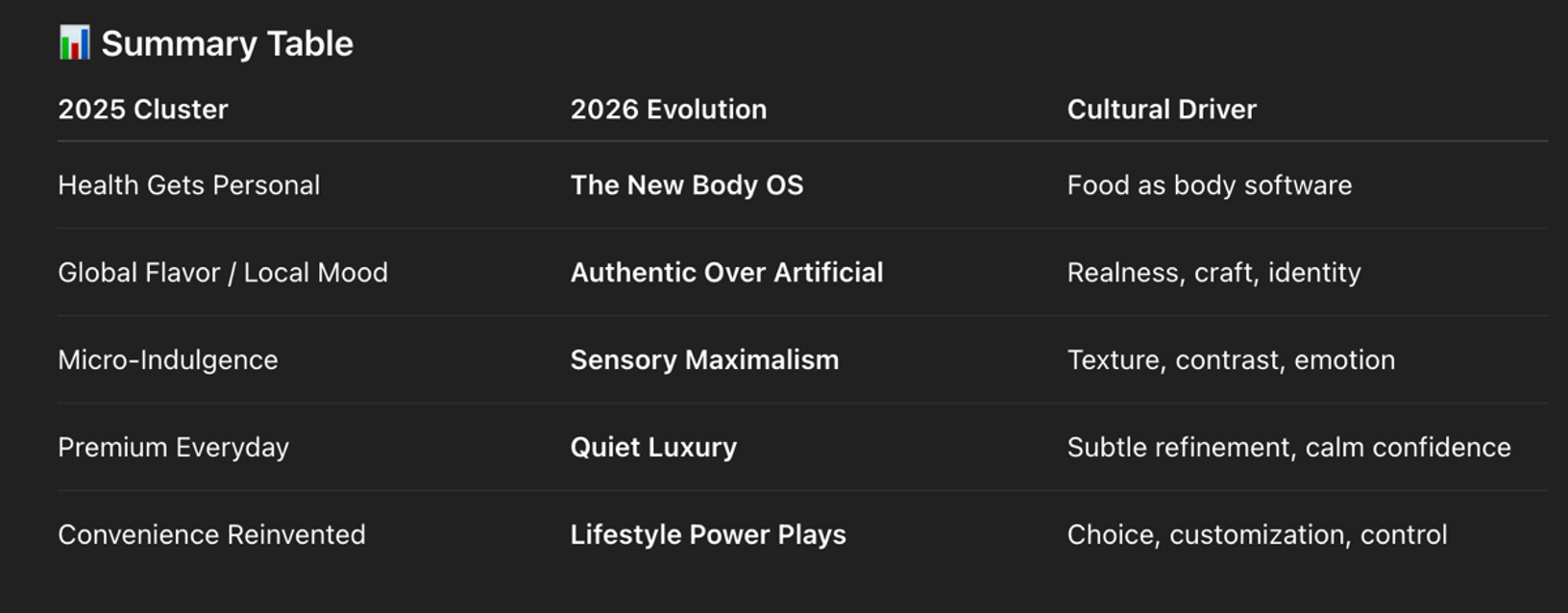
Using AI to Turn Trend Overload into an Editorial Roadmap
How I used ChatGPT to make sense of 2026 food-trend reports.
It’s the most wonderful time of the year…for editors and copywriters. Some of us are knee-deep in Valentine’s Day content and others might be scrambling for fresh holiday angles. One thing’s for sure — trend forecasting season has begun. I LOVE a good list, especially when it’s about food trends. And, while it’s important for me to be on top of this because of my current role, I also just like to know what’s on the horizon as an, um, eater of food? In the past, this kind of planning was overwhelming because:
- My computer desktop looked like a folder graveyard of downloaded reports, not to mention a “to-read” folder also full of information.
- My browser tabs were begging me to stop because their personal space was nonexistent. (This screenshot from a few days ago gives me anxiety.)

- I was having to consume all the information in these dozens of links and files.
- By October, it feels like everyone from Whole Foods to Fresh Thyme has a crystal ball, and of course they all disagree, so that’s fun to sort out.
Enter AI. Instead of skimming and forgetting (or losing my mind — too late), I asked ChatGPT to help me digest and synthesize all of it. I could spend a week highlighting PDFs, or I could ask one question and see all the common threads in minutes. It became my research assistant, and I remain the creative copywriter who decides what matters. And I have more time to focus on the fun part — curating a list of content ideas to bring to my team’s monthly content brainstorm meetings based on actual data. Here’s how I approached it:
The Experiment: Turning PDFs into Insight
Step 1: Gather the chaos.
I downloaded reports like Conagra’s Future of Frozen Food 2025 and Future of Snacking 2025, plus the Tastewise 2026 Culture Shift Forecast, along with supporting insights from Whole Foods, Fresh Thyme, and IFT.
Together, these reports pull from a mix of hard retail and consumer data (Circana/NielsenIQ sales and in-home panels), digital behavior tracking (Tastewise’s AI platform analyzing billions of consumption moments, Google Search trends via Similarweb, and social signals from TikTok and Instagram. All capturing real-time cultural behavior), and expert forecasts.
In other words, they blend quantitative demand science with qualitative cultural insight — exactly the kind of hybrid dataset AI can help pull into editorial direction! Did anyone else just get chills after reading that sentence?
Step 2: Give AI the homework.
I uploaded the files and asked questions like:
- “Where do these reports overlap?”
- “What data sources are they using?”
- “What patterns connect frozen foods and snacking trends?”
*The AI isn’t guessing, here. It’s summarizing my curated material.
Step 3: Watch the patterns surface.
The moment of clarity: ChatGPT identified recurring themes — health tech (GLP-1, gut health), global spice, mini-formats, premium convenience — which I later shaped into five macro pillars.
Seeing those connections side by side was the first time I could translate data into story potential instead of just category noise.
It also showed me what the trend decks don’t say out loud: that 2026 food culture is shifting from ingredients to identity. GLP-1 – turning wellness into software. Authenticity replacing novelty. Texture becoming luxury. And convenience evolving into agency. Those patterns were buried under hundreds of slides — until AI lined them up like chapters in one bigger story.

The value. AI connects dots faster than I can skim.
- It detected the cultural upgrade from “what’s selling” to “why people buy.”
- This exercise didn’t replace my judgment. It accelerated it!
- When I asked about overlap across reports, it flagged GLP-1 ten times, but it wasn’t just repeating a buzzword. It showed me how frozen dinners, snacks, and even cocktails are responding to the same cultural reset: wellness that runs on software logic — the new ‘Body OS.’” Intriguing!
- Every report, no matter the category, kept circling back to bold heat and smaller bites — basically, ‘spice and snackify everything.’
The outcome: I have the start of a living editorial roadmap.
By seeing overlapping trend clusters, I can help plan next year’s content calendars more strategically by taking these high-level categories and getting down into the nitty gritty for editorial angles.
- Q1: “Health Gets Personal” (Food as Body Software)
- Q2: “Authentic over Artificial”
- Q3: “Sensory Maximalism”
- Q4: “Quiet Luxury”
- Q5: “Lifestyle Power Plays”
And these are the kinds of stories that emerge once the patterns start talking. My job isn’t to predict them. It’s to translate them into something customers want to read. I’m not going to share what I have brewing so far, but here are headline though-starters that I wouldn’t necessarily use for any of the vehicles I work on, just so you can get an idea of editorial angles:
- The New Etiquette of Eating on Ozempic: how GLP-1 culture is reshaping dinner parties, portion sizes, and what it means to ‘host.’
- Crunch Is the New Comfort: how texture took over TikTok, from freeze-dried candy to ASMR coffee foam, and what it says about post-pandemic craving.
- We’re All Just Building Bowls Now: why customizable, portion-controlled meals mirror the way people want to design their lives.
AI didn’t hand me a content calendar; it handed me clarity (and TIME). It showed me that what feels like noise is actually a chorus. I just needed a tool that could hear all the voices at once (cue Daft Punk’s "Technologic").

0 Comments Add a Comment?